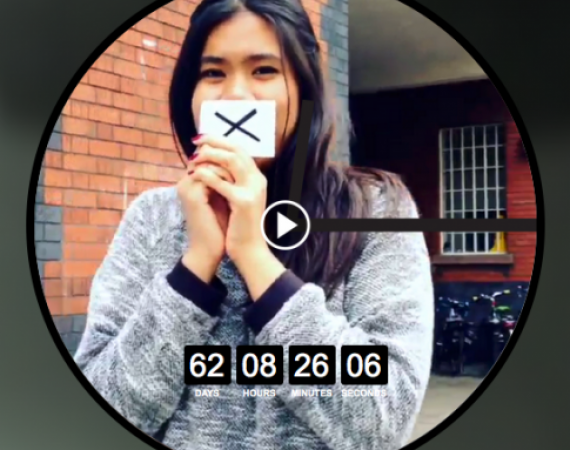Lunchtime talk write-up
Posted on Fri 10 Jul 2015
Time for Rights
On Friday 3 July, Studio resident Tim Kindberg joined us to talk about a timely new and exciting project he has been working on. Tim has been a resident of the Studio since 2009, and for the last couple of years he has been developing Nth Screen; an app that enables video recording on multiple…

Time for Rights
Speaker
On Friday 3 July, Studio resident Tim Kindberg joined us to talk about a timely new and exciting project he has been working on. Tim has been a resident of the Studio since 2009, and for the last couple of years he has been developing Nth Screen; an app that enables video recording on multiple devices in sync to create a video mosaic. Alongside working on Nth Screen, Tim received the first commission from 1215.today (an initiative led by University of Lincoln) to develop a project engaging young people around the world with human rights issues connected with Magna Carta to mark its 800th anniversary. Here are five things I learned about Time for Rights:
1. Time for Rights is a global video event, taking place at 12:15 on Wednesday 12 August 2015, International Youth Day. Young people aged 14-24 will film a 6 second video about the human right that matters most to them. The videos will be posted to Instagram. The reason the filming is synchronised across the world (in each time zone), is to cultivate a sense of solidarity amongst young people and the human rights most important to them.
2. For the launch of 1215.today, held at Lincoln Castle Prison, Tim wrote Doing Time, a play for four voices, spoken out of four smartphones. With the help of some volunteers from the audience, Tim performed the play during his Lunchtime Talk.
3. Tim will be capturing certain data as people record their videos: chosen human right, time zone, the language the phone is set to, and IP number. After the event, Tim has an ambition to create a mosaic of the collected videos and captured data. This might take the form of a planetary shaped mosaic, which turns for 6 seconds per time zone.
4. Tim has a goal for 500 young people, from 10 countries and 6 continents to create and share their videos. He is in the process of making contacts with organisations that can help spread the word and engage young people across the world, and not just in the UK.
5. The young people creating the videos are asked to spin whilst recording, signifying the global nature of the project spanning different time zones, and to show a 360° view of their location. Tim ended his talk with explaining how Time for Rights is running against the grain of the Internet. It is asking you to do something at the same time in a different space, and he is hypothesising that the synchrony of the act will affect the sense of solidarity amongst participants.
-->
